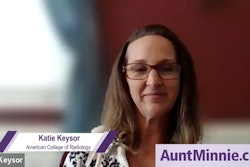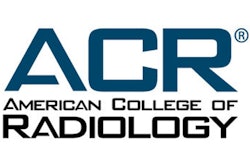
The final rule related to the No Surprises Act (NSA), issued August 26, 2022, clarifies and modifies the independent dispute resolution (IDR) process but makes no changes to the patient protections and other provider obligations of the NSA, such as notifications and cost estimates for uninsured patients.
 Sandy Coffta.
Sandy Coffta.The IDR process has been the most controversial part of the NSA, especially the stipulation of the qualifying payment amount (QPA) as the primary determinant of reimbursement. The rule finalizes disclosures that insurance payers must share about the QPA, and it addresses the information to be considered in the determination of payment under the IDR process.
Determining the QPA
The interim final rules (IFR) that have been governing dispute resolution until now specified that the dispute resolution entity had to begin with the presumption that the QPA is the appropriate out-of-network rate for the disputed service. The QPA is defined as the insurance plan's median contracted rate for the same or similar service in the specific geographic area as of January 31, 2019, adjusted for inflation.
The final rule makes two changes to the use of the QPA:
- The certified IDR entity must select from the offers made by the parties, the one that the entity determines best represents the value of the disputed service as the out-of-network rate. This means that factors affecting valuation, other than the QPA, must be given weight if they are credible.
- The QPA must be calculated separately for each provider specialty.
The additional information that must be considered in determining the payment rate for a service may include the following:
- The level of training, experience, and quality and outcomes measurements of the provider or facility that furnished the service.
- The market share held by the provider or facility, or that of the plan or issuer, in the geographic region in which the service was provided.
- The acuity of the patient receiving the service, or the complexity of furnishing the service to the patient.
- The teaching status, case mix, and scope of services of the furnishing facility.
- Demonstration of good faith efforts (or lack thereof) made by the provider and the payer to enter into network agreements with each other and, if applicable, contracted rates between the provider and the payer during the previous four plan years.
The IDR entity must, in all cases, issue a written decision with a comprehensive discussion of the rationale for the decision, including an explanation of the determination that identifies the information the entity considered that demonstrated that the offer selected is the one that best represents the value of the service.
Same Specialty Requirement
The separately-issued frequently asked questions published on the federal government's website states (in question 14) that the median contracted rate used for the QPA is required to be calculated separately for each specialty and that rates of $0 in a fee schedule are not to be considered in the calculation.
The FAQ recognizes that a payer might issue a comprehensive baseline fee schedule on which a practice might then negotiate higher rates for its particular services, while the remaining services it does not provide are left in the contracted fee schedule at the lower rates. Similarly, the contracted fee schedule might contain $0 for items that are not provided by a practice.
This is important to specialties such as radiology where a service might be incidental to another practice's primary specialty (such as x-ray to an internal medicine office or MRI to an orthopedic group) and their contracted rate does not reflect the rate for full-service radiology practices. Some commentators have suggested that this rationale could be extended to exclude contracts with radiology practices that only provide global services but which might have a baseline professional component fee schedule in their contract when calculating the median professional component for the QPA. The FAQ noted that this provision will not apply to calculation of the QPA for services provided prior to November 17, 2022.
Downcoding
Another important clarification contained in the final rule is that an additional explanation of the QPA must be included when services are "downcoded." Downcoding, as defined in the final rule, means the alteration by the payer of a service code to another service code, or the alteration, addition, or removal of a modifier, if the changed code or modifier is associated with a lower QPA than the service code or modifier billed by the provider or facility. The payer must then provide the following:
- A statement that the service code or modifier was downcoded
- An explanation of why the claim was downcoded, including a description of which service codes were altered, if any, and which modifiers were altered, if any
- The amount that would have been the QPA had the service code or modifier not been downcoded
Disclosure and Consent
The No Surprises Act requires that practices provide certain disclosures to patients and, in some cases, additional consent forms. There are now two versions of this material, along with instructions for its use, available from the U.S. Centers for Medicare and Medicaid Services (CMS). One version is for use only during 2022 and the other is for use in 2022 and beyond. Practices should review the revised instructions and requirements for both sets of documents.
All practices are required to post a model disclosure notice on their website, in a location that is on a searchable home page. The same information must be prominently displayed in a location where patients schedule, check-in, or check-out for appointments.
In addition, a written notice (limited to one page, double-sided) must be given to all patients. A separate surprise billing protection form (also known as the good faith estimate) must be given to patients who are not in-network for the practice.
Conclusion
The new rule takes effect for services provided on and after October 25, 2022. The American College of Radiology (ACR) has posted a very good summary of the key points contained in the final rules, including the background of the No Surprises Act. More information about the No Surprises Act can be obtained from our previous articles.
Sandy Coffta is the vice president of client services at Healthcare Administrative Partners.
The comments and observations expressed are those of the author and do not necessarily reflect the opinions of AuntMinnie.com.



















